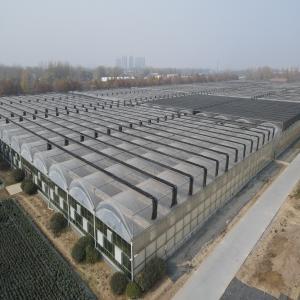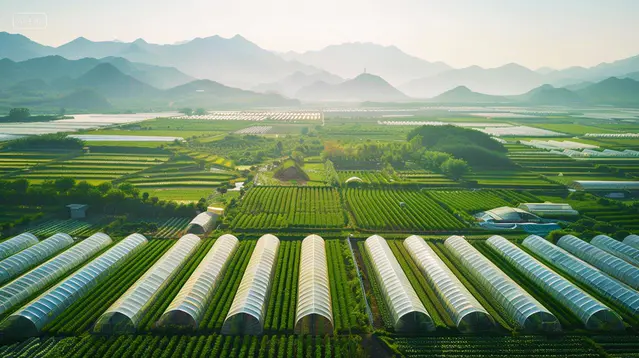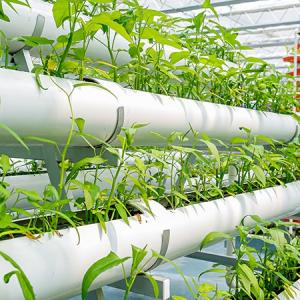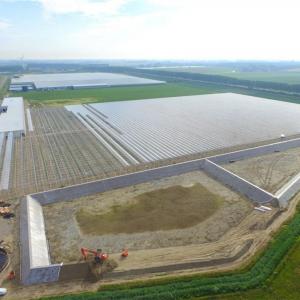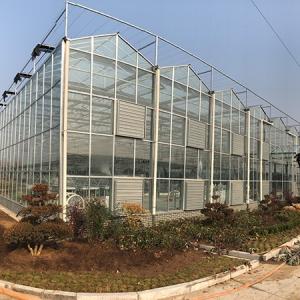Government Support for Vertical Hydroponic Farming in the USA
Understanding Vertical Hydroponic Farming
Discover the future of sustainable agriculture with vertical hydroponic farming. In this innovative approach, crops are grown in vertically stacked layers, utilizing controlled environments and nutrient-rich water solutions. With this method, farmers can maximize space efficiency and achieve higher crop yields while reducing water consumption.
Vertical hydroponic farming is an innovative method of agriculture that involves growing crops in vertically stacked layers, without the use of soil. Instead, plants are cultivated in a controlled environment using nutrient-rich water solutions. In this system, the plants' roots are suspended in the water, which contains a carefully balanced mixture of nutrients essential for their growth.
This approach to farming maximizes space efficiency by utilizing vertical space rather than traditional horizontal fields. The crops are typically grown in specialized structures or towers, where each layer receives adequate light, water, and nutrients. By stacking the plants vertically, farmers can cultivate a larger number of crops in a smaller area.
The controlled environment in vertical hydroponic farming allows for precise control over factors such as temperature, humidity, and lighting. This enables optimal growing conditions for the plants, leading to faster growth rates and higher crop yields. Additionally, the absence of soil eliminates the risk of soil-borne diseases and pests, reducing the need for pesticides and herbicides.
One of the significant advantages of vertical hydroponic farming is its efficient use of water. The system recirculates the water, minimizing water consumption compared to traditional soil-based farming methods. This makes vertical hydroponics a more sustainable and water-conscious approach to agriculture, especially in regions with limited water resources.
Vertical hydroponic farming has gained popularity due to its ability to produce a consistent supply of fresh, high-quality produce throughout the year, regardless of seasonal limitations. It also offers the potential for urban farming, bringing food production closer to urban centers and reducing the distance food needs to travel, thereby lowering carbon emissions associated with transportation.
Overall, vertical hydroponic farming represents a promising solution for sustainable agriculture, addressing the challenges of space limitations, water scarcity, and the need for year-round crop production.
The Benefits of Vertical Hydroponic Farming
Vertical hydroponic farming offers a range of advantages for both farmers and consumers. Firstly, it enables year-round cultivation, eliminating seasonal limitations and ensuring a steady supply of fresh produce. This consistent availability of crops allows consumers to enjoy a wide variety of vegetables and herbs throughout the year, regardless of external weather conditions.
Additionally, vertical hydroponic farming is known for its water conservation benefits. Compared to traditional soil-based farming, this method requires significantly less water. The closed-loop system in vertical hydroponics allows for efficient water usage, as the water is recirculated and reused within the system. This water-saving approach not only reduces the strain on water resources but also helps farmers minimize their water expenses.
Another advantage of vertical hydroponic farming is its potential for urban agriculture. The system's vertical design allows farms to be established in urban areas where horizontal space may be limited. By utilizing vertical space, farmers can optimize land usage and grow crops in areas that are closer to consumers. This reduces the distance food needs to travel, resulting in fresher produce and decreased transportation-related carbon emissions.
Furthermore, the controlled environment of vertical hydroponic farms offers precise control over various growth factors such as temperature, humidity, and lighting. This enables farmers to create ideal conditions for plant growth and maximize crop yields. By ensuring optimal growing conditions, vertical hydroponic farming can produce higher-quality and more consistent harvests, meeting the demands of consumers and enhancing overall agricultural productivity.
In conclusion, vertical hydroponic farming provides benefits such as year-round cultivation, water conservation, urban farming opportunities, and improved crop yields. By embracing this sustainable and efficient farming method, farmers can meet consumer demands for fresh produce while minimizing their environmental impact.
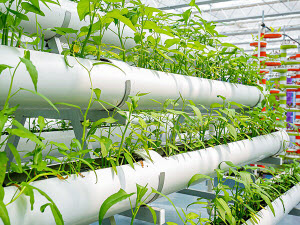
Federal Grants and Funding Opportunities to Support Vertical Hydroponic Farming
The U.S. government recognizes the importance of supporting vertical hydroponic farming and offers various grants and funding opportunities for farmers in this field. These initiatives aim to promote sustainable agriculture practices, energy efficiency, and the development of specialty crops. Here are some notable federal grants and funding programs available:
1. Rural Energy for America Program (REAP): Administered by the United States Department of Agriculture (USDA), REAP provides grants and loan guarantees to agricultural producers and rural small businesses. This program supports the adoption of renewable energy systems, energy efficiency improvements, and energy audits. Vertical hydroponic farmers can explore REAP funding to invest in energy-efficient technologies and infrastructure for their operations.
2. Specialty Crop Block Grant Program: Also facilitated by the USDA, the Specialty Crop Block Grant Program aims to enhance the competitiveness of specialty crops, including fruits, vegetables, and horticulture products. This grant program supports initiatives that promote research, marketing, and education related to specialty crops. Vertical hydroponic farmers focusing on specialty crops can pursue these grants to strengthen their production, marketing, and distribution strategies.
3. Small Business Administration (SBA) Loans and Grants: The Small Business Administration offers loans and grants to agricultural entrepreneurs, including those interested in establishing vertical hydroponic farms. Through various loan programs, such as the 7(a) Loan Program and the Microloan Program, farmers can secure financing for equipment, infrastructure, and operational expenses. Additionally, the SBA provides grants to support business development and training initiatives for agricultural entrepreneurs.
By leveraging these federal grants and funding opportunities, vertical hydroponic farmers can access financial support to establish and expand their operations. It is advisable to thoroughly research each program's specific requirements and application processes to determine eligibility and secure the necessary funding for your vertical hydroponic farming endeavors.
Tax Incentives and Rebates to Encourage Vertical Hydroponic Farming
The government offers tax incentives and rebates to incentivize investment in vertical hydroponic farming. These measures aim to alleviate the financial burden associated with setting up and operating hydroponic farms. Here are some notable tax incentives and rebates available:
1. Tax Cuts and Jobs Act: Under the Tax Cuts and Jobs Act, eligible farmers can take advantage of tax deductions for equipment and infrastructure used in their vertical hydroponic farming operations. This provision allows farmers to deduct the cost of qualifying equipment, such as grow lights, irrigation systems, vertical farming structures, and other necessary tools. By deducting these expenses, farmers can reduce their taxable income and potentially lower their overall tax liability.
2. Sales Tax Exemptions: Some states provide sales tax exemptions for agricultural inputs and equipment. These exemptions can significantly reduce the upfront costs associated with purchasing materials, supplies, and machinery used in vertical hydroponic farming. By eliminating the sales tax on these essential items, farmers can save money and make vertical hydroponic farming a more financially viable and attractive option.
These tax incentives and rebates are designed to support and promote the adoption of vertical hydroponic farming methods. By reducing the financial burden and providing cost-saving opportunities, the government aims to encourage more farmers to embrace this sustainable and innovative agricultural practice. It is advisable for farmers to consult with tax professionals and relevant state agencies to understand the specific eligibility criteria and requirements for accessing these incentives and rebates.
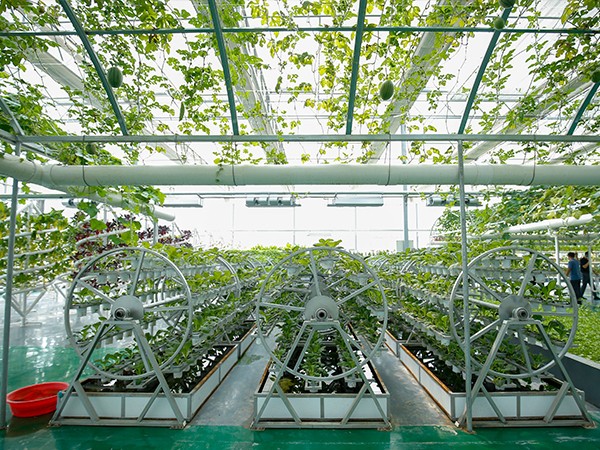
Collaborative Research and Development Programs
The government actively engages in collaborative research and development programs to advance the field of vertical hydroponic farming. Through partnerships with research institutions and universities, innovative solutions and practices are developed. Key players in this domain include the National Institute of Food and Agriculture (NIFA), which offers grants for research and development projects centered around sustainable agriculture and alternative farming methods.
These collaborative programs focus on various aspects of vertical hydroponic farming, including exploring new technologies, optimizing crop production, and enhancing the efficiency of vertical hydroponic systems. Researchers and experts work together to study and develop innovative techniques, such as advanced lighting systems, nutrient delivery methods, and automation technologies, to improve overall system performance and crop yield.
The aim of these collaborative efforts is to drive sustainable agriculture practices and contribute to the continuous advancement of vertical hydroponic farming. Through research grants and funding, these programs encourage scientists and experts to explore new avenues, test hypotheses, and develop practical solutions to address challenges and maximize the potential of vertical hydroponic farming.
By fostering collaboration between the government, research institutions, and universities, these initiatives facilitate the exchange of knowledge, expertise, and innovative ideas, leading to the continuous improvement and optimization of vertical hydroponic farming systems. The ultimate goal is to develop more efficient and sustainable methods that can help meet the growing demand for fresh, nutritious, and locally grown produce.
Training and Education Initiatives for Vertical Hydroponic Farming
Recognizing the importance of skilled professionals in the field of vertical hydroponic farming, the government provides support for training and education initiatives. These programs aim to equip individuals with the necessary knowledge and skills to excel in hydroponic cultivation. Here are some notable training and education initiatives:
1. USDA Resources and Programs: The United States Department of Agriculture (USDA) offers resources and programs to educate farmers on the best practices of hydroponic cultivation. These resources include informational materials, guides, and workshops that cover various aspects of hydroponics, including system design, nutrient management, pest control, and crop selection. By accessing these USDA resources, farmers can stay informed about the latest advancements and proven techniques in hydroponic farming.
2. Vocational Schools and Agricultural Colleges: Vocational schools and agricultural colleges offer specialized courses and certifications in hydroponics. These educational institutions provide comprehensive training programs that cover the principles and practical applications of vertical hydroponic farming. Students learn about system design, nutrient management, water quality, crop physiology, and other essential topics. By completing these courses and earning certifications, individuals gain the knowledge and skills necessary to thrive in the emerging field of vertical hydroponic farming.
These training and education initiatives play a crucial role in developing a skilled workforce for the hydroponic industry. By equipping individuals with the expertise needed to implement best practices and optimize hydroponic systems, the government supports the growth and success of vertical hydroponic farming. Through continuous learning and education, professionals in this field can stay up-to-date with the latest advancements and contribute to the sustainable and efficient production of fresh, high-quality crops.
By aligning with government support and leveraging the benefits of vertical hydroponic farming, farmers can contribute to a sustainable and resilient agricultural landscape in the USA.

